Leveraging IT Capabilities and Competitive Process Capabilities for Interorganizational Relationship Portfolio Management
Regents’ Professor and the Harkins Chair in Information Systems
Robinson College of Business
Georgia State University
October 30, 2009
Alter Hall 405, 1000am – 1130am
Abstract
Firms are increasingly dependent on external resources and are establishing portfolios of interorganizational relationships (IRs) to leverage them for competitive advantage. However, the system of IT and process capabilities that firms should establish to dynamically manage IR portfolios are not well understood. We draw on the competitive dynamics perspective and resource dependency theory, and on the literatures on IT business value, interorganizational systems and interorganizational relationship management, to theorize how key IT structural capabilities (IT integration and IT reconfiguration) and competitive process capabilities (process alignment, partnering flexibility and offering flexibility) operate as a system of complements. We also theorize why a firm’s IR portfolio moderates the effects of the structural IT capabilities on the competitive process capabilities, and why a firm’s environmental turbulence moderates the effects of complementary process capabilities on competitive performance. We test our model using survey data from 318 firms in four industries. Our results provide broad support for the position that IT and process capabilities are interdependent and operate as a system of complements, that the relationship between the structural IT capabilities and the competitive process capabilities is contingent on IR portfolio concentration, and that the competitive advantage derived from the complements of competitive process capabilities is contingent on environmental turbulence. We discuss the theoretical and practical implications of how firms should develop a complementary system of IT structural capabilities and competitive process capabilities to dynamically manage IR portfolios and leverage external resources.
For a copy of the complete paper, please send an email to swattal@temple.edu
